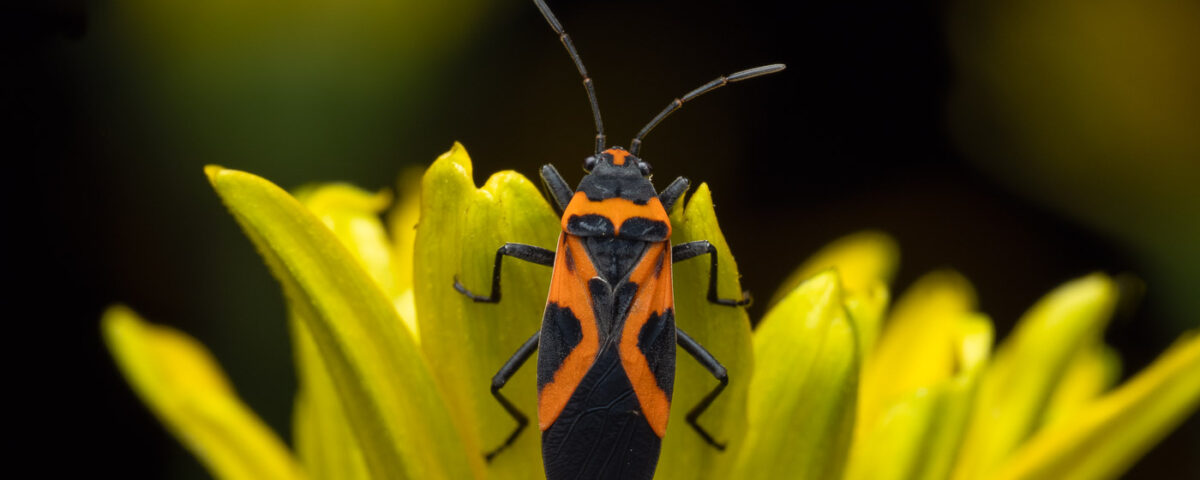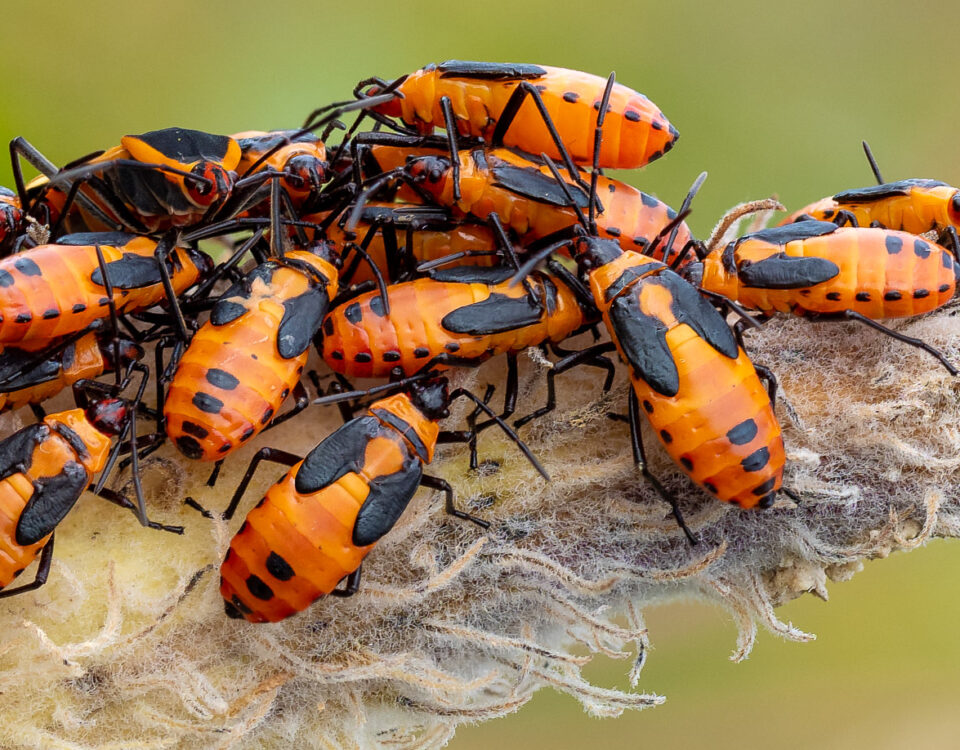
A female Eastern Forktail damselfly flew in for everyone to see.
1_P6041795_24Jun04
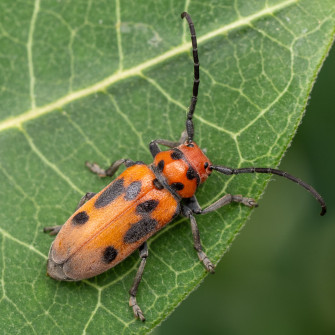
The Red Milkweed Beetle is a specialist, and particularly likes Common Milkweed.
2_P6180136_24Jun18
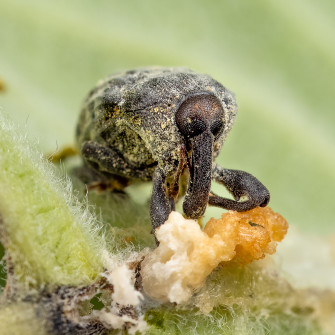
Another Milkweed specialist, the Milkweed Stem Weevil, looking over sap that has hardened from the hole it made in the leaf.
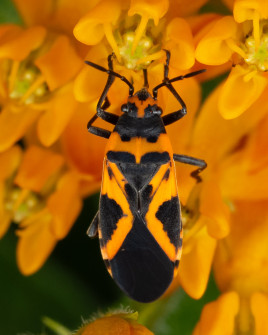
We had lots of False Milkweed Bugs whose larvae are specialists on False Sunflowers. These insects are great mimics of milkweed bugs that are poisonous.
4_P8112703_24Aug11

And then we found one Small Milkweed Bug - an insect that has poisons in its body from feeding on milkweed. This is what the False Milkweed bug is mimicking. Fooled us!!
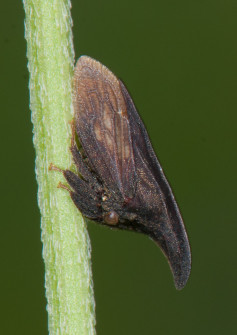
This Wide-footed Treehopper mimics a thorn to avoid predation. We saw many little insects that are loosely called True Hoppers. This group includes aphids and not-small cicadas, but also treehoppers, planthoppers, and leafhoppers.
6_DSC_1083__18Jul04
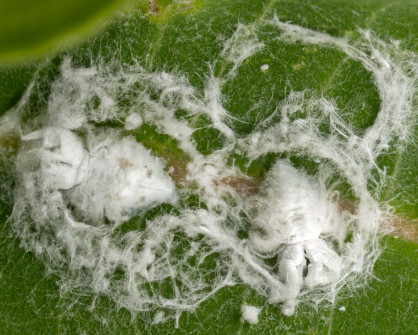
The newly emerging nymphs of some of our Planthoppers look like fuzz on leaves and stems. While tiny, we could see a few bugs forming in the fuzz on plants in the garden.
7_P7081436_24Jul08
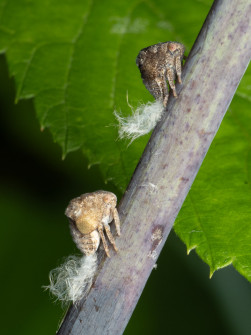
And when they get a little bigger, some form into these crazy looking critters. They're Acanalonia sp (no common name).
8_P7131281_25Jul13
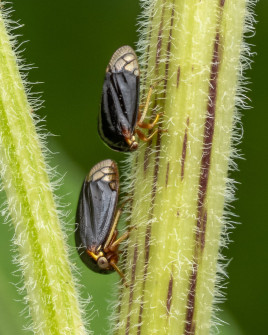
We saw several of these treehoppers on stems. They use sunflower and goldenrod plants in addition to a few tree species. They're Acutalis tartarea (with no common name).
9_P6291422_24Jun29
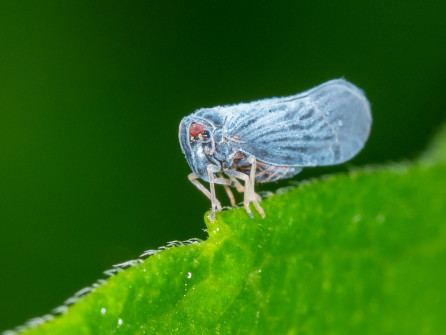
These tiny little blue planthoppers were visible on several plants. Their larvae are known to feed on fungi in the leaf litter.
10__S050683_21Jul05
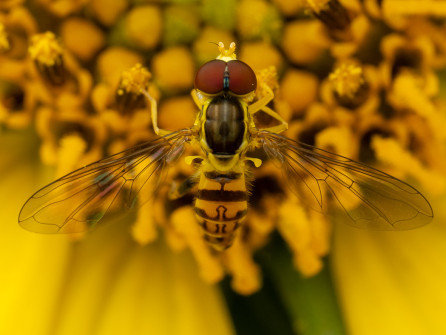
These tiny little flower flies are called Calligraphers for the patterns on their abdomen. They're a gardener's best friend because the adults are pollinators and their larvae are aphid eaters.
11_P7110818_25Jul11
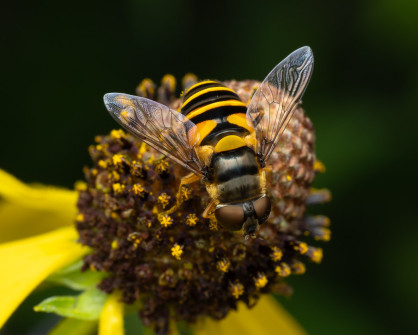
This flower fly is often mistaken for a bee. It's the Transverse-banded Drone Fly.
12_P7110582_25Jul11
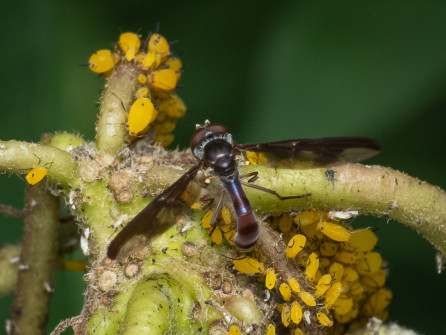
We watched one of these Flower Flies hovering around a plant. Hover Fly is another name for this group of flies. I photographed this Dusky-winged Hover Fly in my garden. She's laying an egg in the midst of the aphids.
13_P7110733_25Jul11
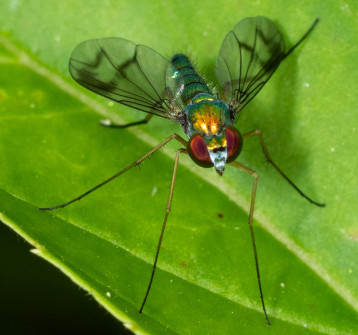
Long-legged Flies hang around gardens in search of even tinier insects to catch and eat.
14__S150365_19Jun15
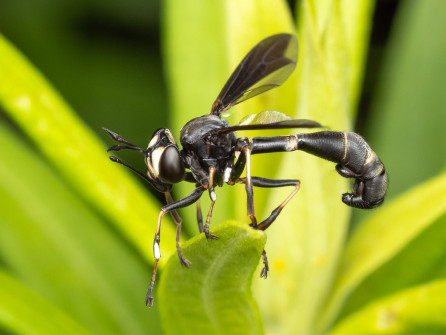
We saw one of these Thick-headed Flies. She's devious. While she's pollinating flowers, she's on the look-out for prey to catch and inject her egg (while in flight with the bee). Her larvae will parasitize the bee.
15_P7081393_24Jul08
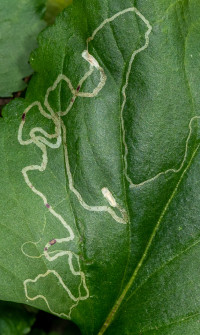
The squiggly marks in a few of the Golden Ragwort leaves are made from tiny insect larvae that feed on the leaves.
16__B180689_20Oct18
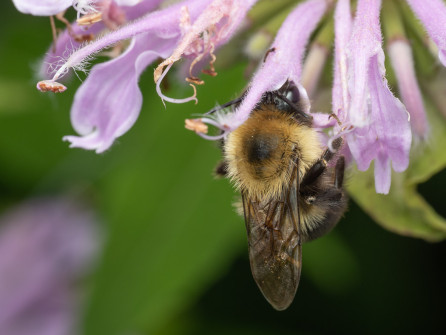
Bumblebees were buzzing about.
17_P7110593_25Jul11
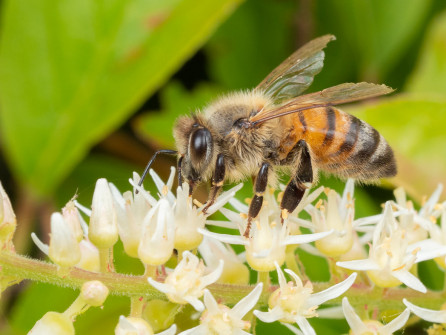
And a few honeybees.
18__S112352_23Jun11
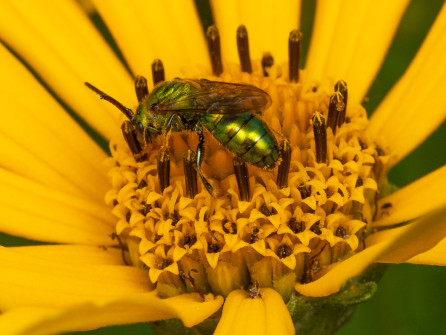
There were several colorful green sweat bees working on flowers.
19_P7091520_24Jul09
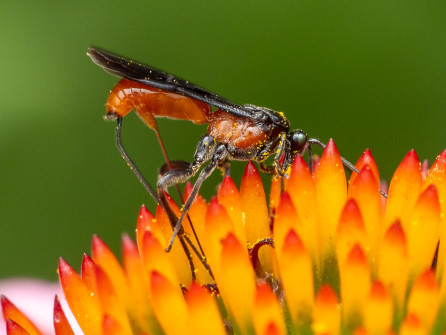
We saw some parasitic wasps with super long ovipositors laying eggs onto some flower heads.
20_P7121125_25Jul12
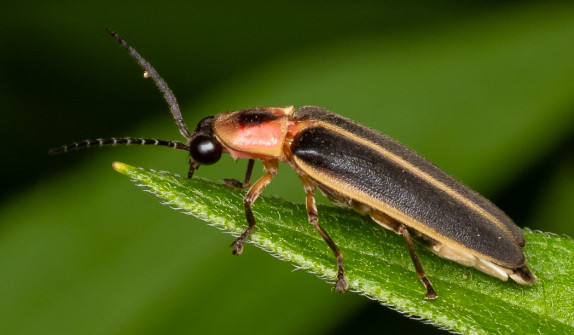
We found a Firefly, or Blinky Beetle, resting in the garden.
21_P6200482_24Jun20
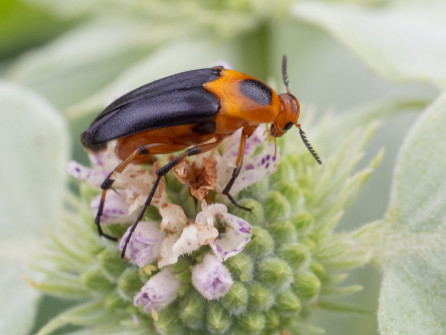
I got most excited by this find, several female Macrosiagon limbatas (no common name) that live for only a few days. She will lay an egg in various flowers and her larva will attempt to catch a ride on the underside of a bee to its nest, and then parasitize a bee larvae.
22_P7121078_25Jul12
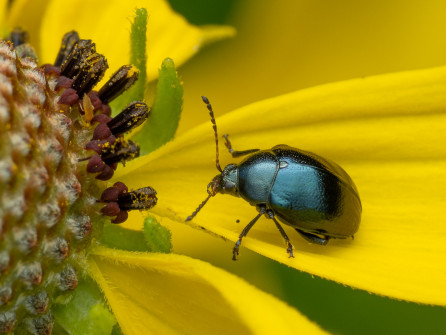
This is an example of the tiny leaf beetles we saw. They often appear black, but can have beautiful iridescence.
23_P7110796_25Jul11
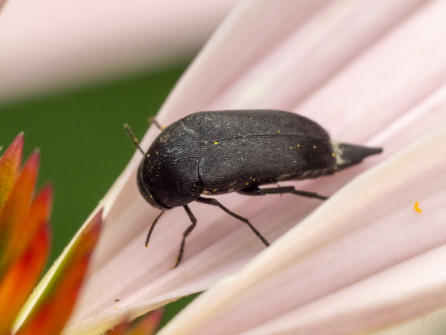
Tumbling flower beetles can be quite small and unnoticed in flowers. Look for their distinctive tails and down-turned heads.
24_P7121133_25Jul12
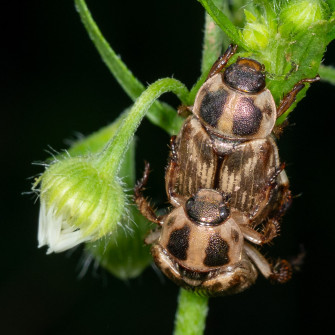
The Oriental Beetle, like the Japanese Beetle, is an introduced species that can be problematic.
25__S050674_21Jul05
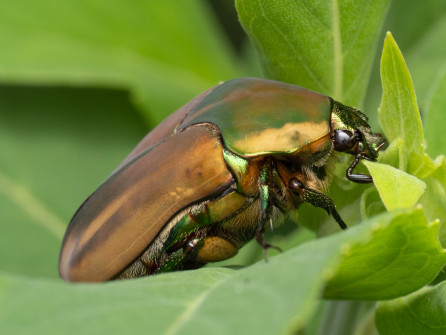
This Flower Scarab, a Green June Beetle, was one of our larger finds.
26_P7121084_25Jul12
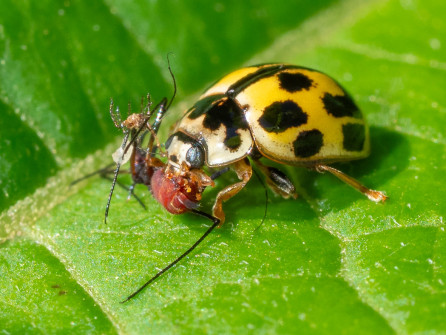
The introduced Fourteen-spotted Lady Beetle has squarish spots with a background color that is typically white to yellow, but can be reddish. This one is demonstrating its benefit to gardens.
27__S251698_22Jun25
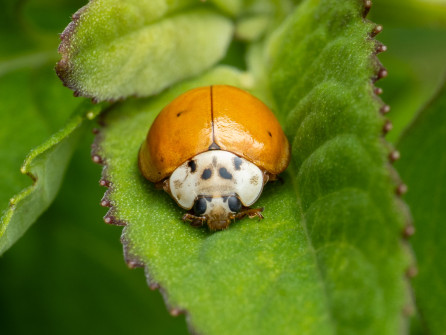
The Asian Multicolored Lady Beetle ranges from no to many spots. This introduced species has reached pest status in our area and may be a contributing factor to the decline of our native lady beetles.
28_P7051246_25Jul05

We had one Monarch briefly stop by. Our activity was likely a bit much for butterflies. In this photo, note the tiny wasp on the flower petal.
31__S050118_19Jul05
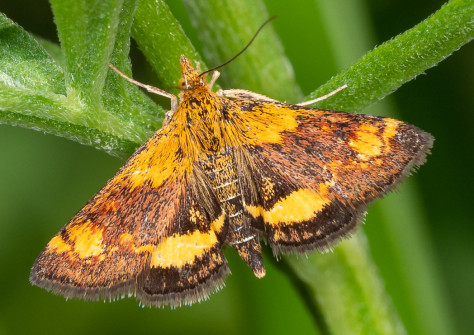
This Orange Mint Moth is one of our day flying moth, and true to its name will lay eggs on mint plants.
32__S030567_22Jul03
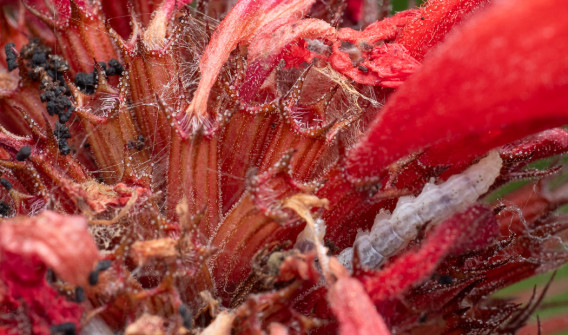
Caterpillars are good at hiding. I found this one in Beebalm in the garden because of its telltale sign of waste droppings at the left side of the image.
33_P7121080_25Jul12
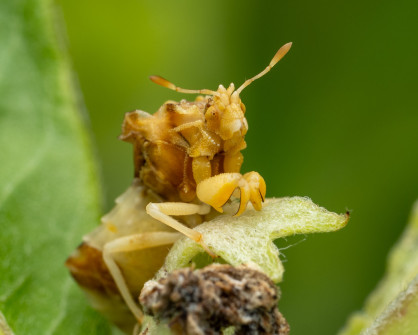
A Jagged Ambush Bug was patiently waiting to surprise prey.
29_P7031065_25Jul03

The garden had a fair number of small jumping spiders like this Peppered Jumper, roaming about, actively searching for prey.
30_P7121115_25Jul12
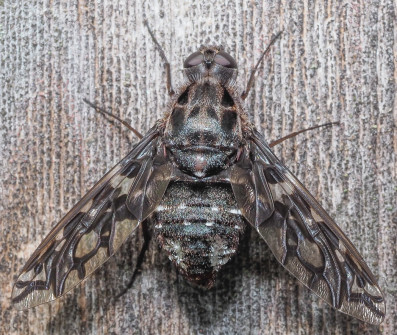
While enjoying our snack before the crew got back to work, we saw this large Tiger Bee Fly. It's a parasatoid of Carpenter Bees.
34_P8080443_18Aug08




